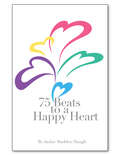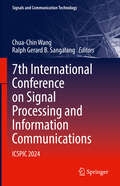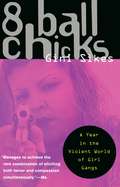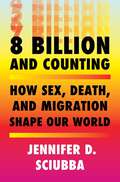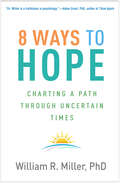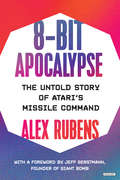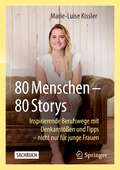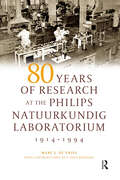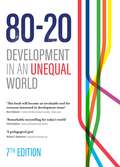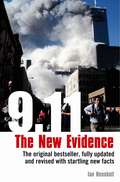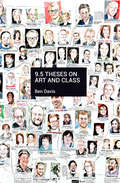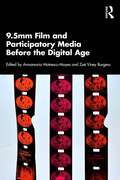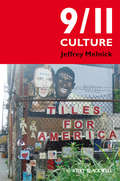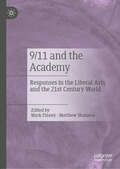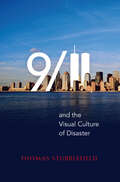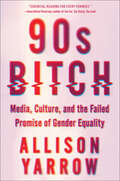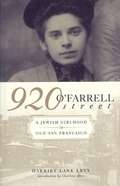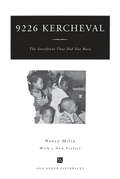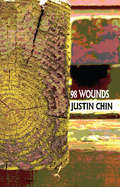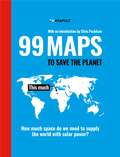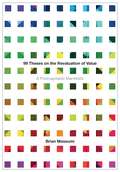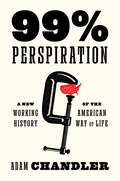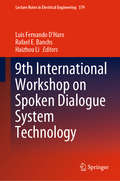- Table View
- List View
75 Beats to a Happy Heart
by Jackie Madden HaughAs a little girl, Jackie Madden Haugh was taught by her parents that there were two types of heartbeats: one that served as the life force within the physical frame, sending blood and oxygen to all parts of the body, and another that resided in the spirit, a mystical pulse that nourished the soul. But, it wasn’t until Jackie became a caregiver to both her parents in their declining years, and suffered through a divorce, hat she discovered the true way to feed the soul was by living a life in constant gratitude. Being thankful for all the wonders in life is easy, that takes no effort. But, when we’re appreciative for the challenges and heartbreaks thrown our way, for those are our lessons, we’re lead down the winding road to our great becoming; who we were born to be. 75 Beats to a Happy Heart are universal inspirational, funny, and tender short stories from Jackie’s column in the Los Altos Town Crier. By looking for joy in the minutia of her days; those special moments that make a heart pause and reflect, Jackie found the rhythmic, spiritual tapping, that beating pulse that nurtured and fed her soul.
7th International Conference on Signal Processing and Information Communications: ICSPIC 2024 (Signals and Communication Technology)
by Chua-Chin Wang Ralph Gerard B. SangalangThis book contains a series of research papers that were presented at 7th International Conference on Signal Processing and Information Communications (ICSPIC 2024). The conference was held in Batangas City, Philippines from April 24-26, 2024. The conference aims to provide a leading international forum for researchers, practitioners, and professionals from the industry, academia and government to share their ideas, progresses and achievements in signal processing and information communications. The contributions focus on the latest advances, trends and future challenges in analog and mixed signal processing, design and implementation of signal processing systems, compressive sensing, machine learning methods for communications and signal processing, multimedia signal processing, natural language processing, next generation mobile communications, nonlinear signal processing, optical communications, parallel and distributed processing, etc. The conference is made up of theorists and experts in advanced characterization techniques in the fields of signal processing and information communications, which brings researchers, practitioners, and scientists in discussion of the latest methods, research developments, and future opportunities.
8 Ball Chicks: A Year In The Violent World Of Girl Gangs
by Gini SikesDismissed by the police as mere adjuncts to or gofers for male gangs, girl gang members are in fact often as emotionally closed off and dangerous as their male counterparts. Carrying razor blades in their mouths and guns in their jackets for defense, they initiate drive-by shootings, carry out car jackings, stomp outsiders who stumble onto or dare to enter the neighborhood, viciously retaliate against other gangs and ferociously guard their home turf.But Sikes also captures the differences that distinguish girl gangs-abortion, teen pregnancy and teen motherhood, endless beatings and the humiliation of being forced to have sex with a lineup of male gangbangers during initiation, haphazardly raising kids in a household of drugs and guns with a part-time boyfriend off gangbanging himself. Veteran journalist Gini Sikes spends a year in the ghettos following the lives of several key gang members in South Central Los Angeles, San Antonio, and Milwaukee. In 8 Ball Chicks, we discover the fear and desperate desire for respect and status that drive girls into gangs in the first place--and the dreams and ambitions that occasionally help them to escape the catch-22 of their existence.From the Trade Paperback edition.
8 Billion and Counting: How Sex, Death, and Migration Shape Our World
by Jennifer D. SciubbaA provocative description of the power of population change to create the conditions for societal transformation. As the world nears 8 billion people, the countries that have led the global order since World War II are becoming the most aged societies in human history. At the same time, the world’s poorest and least powerful countries are suffocating under an imbalance of population and resources. In 8 Billion and Counting, political demographer Jennifer D. Sciubba argues that the story of the twenty-first century is less a story about exponential population growth, as the previous century was, than it is a story about differential growth—marked by a stark divide between the world’s richest and poorest countries. Drawing from decades of research, policy experience, and teaching, Sciubba employs stories and statistics to explain how demographic trends, like age structure and ethnic composition, are crucial signposts for future violence and peace, repression and democracy, poverty and prosperity. Although we have a diverse global population, demographic trends often follow predictable patterns that can help professionals across the corporate, nonprofit, government, and military sectors understand the global strategic environment. Through the lenses of national security, global health, and economics, Sciubba demonstrates the pitfalls of taking population numbers at face value and extrapolating from there. Instead, she argues, we must look at the forces in a society that amplify demographic trends and the forces that dilute them, particularly political institutions, or the rules of the game. She shows that the most important skills in demographic analysis are naming and being aware of your preferences, rethinking assumptions, and asking the right questions. Provocative and engrossing, 8 Billion and Counting is required reading for business leaders, policy makers, and anyone eager to anticipate political, economic, and social risks and opportunities. A deeper understanding of fertility, mortality, and migration promises to point toward the investments we need to make today to shape the future we want tomorrow.
8 Ways to Hope: Charting a Path through Uncertain Times
by William R. MillerYou can't take a leap of faith without it. It lets you dream of a brighter future. And in a world worn down by political conflict, climate change, war, and other perils, many worry about losing it. Pioneering psychologist William R. Miller takes a fresh look at hope and its transformative potential in this concise, compassionate book. Explore eight different facets of hope that enable people to clarify their goals, envision new possibilities, find purpose, enhance motivation, and persevere against tough odds. Dr. Miller guides you to reflect on your own relationship to hope and how you can cultivate it. Vivid personal stories, historical examples, and cutting-edge scientific findings reveal how choosing hope over fear can be a powerful force for change.
8-Bit Apocalypse: The True Story Behind The Classic Video Game
by Alex Rubens Jeff GerstmannThe first history of Atari’s Missile Command, and its unforeseen effects on its creators and the culture Before Call of Duty, before World of Warcraft, before even Super Mario Bros., the video game industry exploded in the late 1970s with the advent of the video arcade. Leading the charge was Atari Inc., the creator of, among others, the iconic game Missile Command. The first game to double as a commentary on culture, Missile Command put the players’ fingers on “the button,” making them responsible for the fate of civilization in a no-win scenario, all for the price of a quarter. The game was a marvel of modern culture, helping usher in both the age of the video game and the video game lifestyle. Its groundbreaking implications inspired a fanatical culture that persists to this day. As fascinating as the cultural reaction to Missile Command were the programmers behind it. Before the era of massive development teams and worship of figures like Steve Jobs, Atari was manufacturing arcade machines designed, written, and coded by individual designers. As earnings from their games entered the millions, these creators were celebrated as geniuses in their time; once dismissed as nerds and fanatics, they were now being interviewed for major publications, and partied like Wall Street traders. However, the toll on these programmers was high: developers worked 120-hour weeks, often opting to stay in the office for days on end while under a deadline. Missile Command creator David Theurer threw himself particularly fervently into his work, prompting not only declining health and a suffering relationship with his family, but frequent nightmares about nuclear annihilation. To truly tell the story from the inside, tech insider and writer Alex Rubens has interviewed numerous major figures from this time: Nolan Bushnell, founder of Atari; David Theurer, the creator of Missile Command; and Phil Klemmer, writer for the NBC series Chuck, who wrote an entire episode for the show about Missile Command and its mythical “kill screen.” Taking readers back to the days of TaB cola, dot matrix printers, and digging through the couch for just one more quarter, Alex Rubens combines his knowledge of the tech industry and experience as a gaming journalist to conjure the wild silicon frontier of the 8-bit ’80s. 8-Bit Apocalypse: The Untold Story of Atari's Missile Command offers the first in-depth, personal history of an era for which fans have a lot of nostalgia.
80 Menschen – 80 Storys: Inspirierende Berufswege mit Denkanstößen und Tipps – nicht nur für junge Frauen
by Marie-Luise KisslerOb Bundestagsabgeordnete, Tattoo-Künstlerin, Chocolatier oder Schornsteinfegerin – das Leben ist ein Kaleidoskop von Möglichkeiten. Dieses Buch zeigt 80 Persönlichkeiten und inspiriert junge Menschen ihren eigenen, einzigartigen Berufsweg zu verwirklichen.Die Interviews enthalten exklusive Ratschläge von 80 erfolgreichen Role Models - sie erzählen aus ihrem Leben, nennen berufliche Erfolge und Fehler beim Namen und verraten persönliche Tipps und Tricks, wie junge Frauen zwischen Selbst- und Fremdanspruch ihre eigene Berufung finden. Die 80 Interviewpartnerinnen sind: Trixie Bannert – Claudia Bechstein – Sandra Berndt – Marco Boos – Sylvia Borcherding – Katja Borghaus – Julia Börs – Julia Bösch – Andrea Bruckner – Ilka Brühl – Linda Burchhardt – Frank Buschmann – Valentina Daiber – Angela De Giacomo - Vanessa Didam – Sabine U. Dietrich – Özlem Doger-Herter – Anja Dorny – Julia Dorny – Katharina Fankidejski – Emilia Fehse – Bettina Fetzer – Nicolette Fountaris – Marie-Christin Ghanbari – Kirsten Heike Giering – Saskia Stella Gleitsmann – Laura Große – Laura Halfas – Ilka Hartmann – Caitlin Hennen – Josephine Henning – Verena Herb – Ulrike Hiller – Nicole Hölscher – Elke Holst – Bettina Hueske – Petra Justenhoven – Lise-Christine Kobla Mendama – Hatice Koca – Carmen Köhler – Anne Kozlowski – Dirk Kreuter – Toma Kubiliute – Kevin Kugel – Ricarda Lang – Meriem Lebdiri – Monika Maria Lehmann – Elisabeth Lepique – Susanne Liebermann – Chenchao Liu – Dubravka Maljevic – Thomas Mickeleit – Lan Anh Nguyen – Martina Niemann – Laura Nolte – Bettina Pauck – Susanne Pfab – Astrid Quentell – Angelique Renkhoff-Mücke – Johanna Röh – Colette Rückert-Hennen – Nicole Schilling – Sabine Schmittroth – Laura Schönberger – Gabriele Sons – Britta Steffen – Julian F. M. Stoeckel – Sarah Süß – Martyna Trajdos – Marie-Christine Trappen – Anastasia Umrik – Lisa Unruh – Katja von Doren – Linda van Rennings – Christina Virzí – Marion A. Weissenberger-Eibl – Hiltrud Dorothea Werner – Alina Wichmann – Nicola Winter – Laura Zieger.
80 Years of Research at the Philips Natuurkundig Laboratorium (1914-1994): The Role of the Nat. Lab. at Philips
by Jan Korsten Marc VriesHistories of major industrial research laboratories are an essential contribution to the history of technology. This book offers a description of the way one of such laboratories has changed its ambitions and activities in the course of time. In the 80-year period that is described here, the Philips Natuurkundig Laboratorium has played different roles for the Philips company – today one of the world’s largest electronics company – which was founded in 1891 in the Netherlands. The history of this laboratory is described in three main periods, each characterized by its goals, available means, organizational structures, research culture, and external relations. For each period the general story line is alternated by case study descriptions.The Philips Natuurkundig Laboratorium was founded in 1914. The term ‘Natuurkundig’ (in English: of physics) indicated that the task of the new laboratory was to conduct research of physics. Initially this research was related to light bulbs. At that time the Philips company, led by the two Philips brothers Anton and Gerard, was primarily a light bulb producing company. Soon the Nat.Lab. (this is the commonly used abbreviation of the full name) became the main source of inventions that would support the company in extending its product portfolio. In the course of time the goal of the lab’s activities shifted in response to changes in its context, both within the Philips company and in a broader national and international context. Today the Philips Natuurkundig laboratorium is part of a worldwide research organization, Philips Research that generates options for new and improved products and processes and produces important patents in those electronics markets in which the company is active. It is still one of the world’s major private research organizations. A key characteristic is the wide range of disciplines that are represented: from electrical engineering and physics to chemistry, mathematics, mechanics, information technology and software.
80: Development in an Unequal World
by Ciara Regan Colm Regan Tony DalyA development education resource designed and written by an international group of authors and educationalists. It explores inequalities and injustices in an accessible and understandable fashion, with infographics, figures, graphs, photographs and cartoons. Now in its seventh edition, it is extensively used in universities, schools, adult and youth groups and NGOs.Tony Daly is co-ordinator of Irish development education and human rights organisation 80:20 Educating and Acting for a Better World and project manager for an NGO consortium website www.developmenteducation.ie. Previously, he led a pilot project advancing a human rights approach to community development with the British Institute for Human Rights, London and has been directly engaged in human rights education, development education, curriculum reform and research projects in Ireland, Northern Ireland, the United Kingdom and Australia for over 15 years. He holds degrees from University College Dublin and University College London.Ciara Regan is education consultant to 80:20 Educating and Acting for a Better World. Since 2010 she has worked directly on the developmenteducation.ie website and has researched and published in the area of women and development in the context of HIV and AIDS in Zambia. She has worked on community art projects in Lusaka, Zambia and across Dublin on a wide range of issues such as public accountability, women’s rights, diversity and interculturalism. She holds degrees from NUI Galway and Birkbeck, University of London.Colm Regan initiated and, for many years edited 80:20 Development in an Unequal World – the reader is now widely used internationally, particularly in Africa. He is former co-ordinator of 80:20 in Ireland and has been professionally active for over 40 years in education for human rights, justice and human development – subjects he has written extensively on. In this context, he has worked in development education in Ireland, the UK, Australia, Ethiopia, Rwanda, Brazil and Zambia. He holds post graduate degrees from Simon Fraser University, Vancouver and McGill University, Montreal and now lives, writes and teaches in Gozo, Malta.
9.11: Fully Updated and Revised
by Ian HenshallThe original 9/11 Revealed attracted lavish praise from reviewers in the Daily Mail and Sunday Times for the 'huge gaps' it exposed in the official 9/11 story. It became a non-fiction bestseller despite a wall of silence by the broadcast media and condemnation in a special web page set up by the US State Department. Since then the story has produced many sinister new twists, including: Pentagon whistleblowers have accused the 'Independent 9/11 Commission' of lying; long-suppressed eyewitness testimony has been released confirming multiple explosions in the Twin Towers before and during their collapses; the much vaunted video purporting to prove that Flight 77 hit the Pentagon showed nothing at all; and an analysis of terrorist trials and arrests since 2001 indicates that far from the '600 Al Qaeda sleeper cells in the US' (CIA) there were none at all. In this sequel to 9/11 Revealed, Ian Henshall examines the precedents of black operations by the US/UK, from Northern Ireland to Italy, from Vietnam to Kosovo; he looks at the various 9/11 theories, including the latest twists in the official story, and tests them against the evidence. Finally, he asks what might happen when the storm of popular outrage collides with the regime in Washington and London and outlines the radical changes needed if Washington and London are ever again to function as genuine democracies.
9.11: Fully Updated and Revised
by Ian HenshallThe original 9/11 Revealed attracted lavish praise from reviewers in the Daily Mail and Sunday Times for the 'huge gaps' it exposed in the official 9/11 story. It became a non-fiction bestseller despite a wall of silence by the broadcast media and condemnation in a special web page set up by the US State Department. Since then the story has produced many sinister new twists, including: Pentagon whistleblowers have accused the 'Independent 9/11 Commission' of lying; long-suppressed eyewitness testimony has been released confirming multiple explosions in the Twin Towers before and during their collapses; the much vaunted video purporting to prove that Flight 77 hit the Pentagon showed nothing at all; and an analysis of terrorist trials and arrests since 2001 indicates that far from the '600 Al Qaeda sleeper cells in the US' (CIA) there were none at all. In this sequel to 9/11 Revealed, Ian Henshall examines the precedents of black operations by the US/UK, from Northern Ireland to Italy, from Vietnam to Kosovo; he looks at the various 9/11 theories, including the latest twists in the official story, and tests them against the evidence. Finally, he asks what might happen when the storm of popular outrage collides with the regime in Washington and London and outlines the radical changes needed if Washington and London are ever again to function as genuine democracies.
9.5 Theses on Art and Class
by Ben Davis9.5 Theses on Art and Class seeks to show how a clear understanding of class makes sense of what is at stake in a broad number of contemporary art's most persistent debates, from definitions of political art to the troubled status of "outsider" and street art to the question of how we maintain faith in art itself.Ben Davis currently lives and works in New York City where he is Executive Editor at Artinfo.
9.5mm Film and Participatory Media Before the Digital Age (Routledge Advances in Film Studies)
by Annamaria Motrescu-Mayes Zoë Viney BurgessThis anthology offers the first systematic exploration of 9.5mm amateur film culture, practice and consumption, from its launch in 1922 to the present day. It breathes new life into our understanding of participatory media and its origins in the early twentieth century, revealing how a web of experiences gave rise to a vibrant ecosystem of collaborative storytelling and grassroots cultural movements that continue to shape our understanding of media participation. The collection brings together the work of emerging specialists, early-career researchers, and respected scholars from anthropology, film, media studies and international film archival networks. The 16 chapters in this volume offer fresh insights into early participatory media culture and confirm the ongoing influence and impact of 9.5mm film on global media studies. The interdisciplinary approach and wide‑reaching perspectives make it a valuable resource for cinema and media curricula, film archival projects, cultural and media anthropology, visual sociology, as well as gender, memory and migration studies.
9/11 Culture
by Jeffrey Melnick9/11 Culture serves as a timely and accessible introduction to the complexities of American culture in the wake of the 9/11 attacks. Gives balanced examinations of a broad catalogue of artifacts from film, music, photography, literary fiction, and other popular arts Investigates the ways that 9/11 has exerted a shaping force on a wide range of practices, from the politics of femininity to the poetics of redemption Includes pedagogical material to assist understanding and teaching, including film and discographies, and a useful teachers' preface
9/11 and the Academy: Responses in the Liberal Arts and the 21st Century World
by Mark Finney Matthew ShannonThis book explores the impact of September 11, 2001 upon interdisciplinary scholarship and pedagogy in the liberal arts. Since “the day that changed everything”, many forces have transformed institutions of higher education in the United States and around the world. The editors and contributors consider the extent to which the influence of 9/11 was direct, or part of wider structural changes within academia, and the chapters represent a wide range of interdisciplinary perspectives on how the production and dissemination of knowledge has changed since 2001. Some authors demonstrate that new forms of inquiry, exploration, and evidence have been created, much of it focused on the causes, consequences, and meanings of the terror attacks. Others find that scholars sought to understand 9/11 by applying old theoretical and empirical insights and reviving lines of questioning that have become relevant. The contributors also examine the impact of 9/11 on higher education administration and liberal arts pedagogies. Among the many collective findings is that scholars in the humanities and critical social sciences have been most attentive to the place of 9/11 in society and academic culture. This eclectic collection will appeal to students and scholars interested in the place of the liberal arts in the twenty-first century world.
9/11 and the Visual Culture of Disaster
by Thomas StubblefieldThe day the towers fell, indelible images of plummeting rubble, fire, and falling bodies were imprinted in the memories of people around the world. Images that were caught in the media loop after the disaster and coverage of the attack, its aftermath, and the wars that followed reflected a pervasive tendency to treat these tragic events as spectacle. Though the collapse of the World Trade Center was "the most photographed disaster in history," it failed to yield a single noteworthy image of carnage. Thomas Stubblefield argues that the absence within these spectacular images is the paradox of 9/11 visual culture, which foregrounds the visual experience as it obscures the event in absence, erasure, and invisibility. From the spectral presence of the Tribute in Light to Art Spiegelman's nearly blank New Yorker cover, and from the elimination of the Twin Towers from television shows and films to the monumental cavities of Michael Arad's 9/11 memorial, the void became the visual shorthand for the incident. By examining configurations of invisibility and erasure across the media of photography, film, monuments, graphic novels, and digital representation, Stubblefield interprets the post-9/11 presence of absence as the reaffirmation of national identity that implicitly laid the groundwork for the impending invasions of Iraq and Afghanistan.
90s Bitch: Media, Culture, and the Failed Promise of Gender Equality
by Allison Yarrow“Allison Yarrow takes you back to the era of Anita Hill and Monica Lewinsky and Tonya Harding and examines how the media fueled America’s sexism.”—BustleTo understand how we got here, we have to rewind the VHS tape. 90s Bitch tells the real story of women and girls in the 1990s, exploring how they were maligned by the media, vilified by popular culture, and objectified in the marketplace. Trailblazing women like Hillary Clinton, Anita Hill, Madeleine Albright, Janet Reno, and Marcia Clark were undermined. Newsmakers like Britney Spears, Monica Lewinsky, Tonya Harding and Lorena Bobbitt were shamed and misunderstood. The advent of the twenty-four-hour news cycle reinforced society's deeply entrenched misogyny. Meanwhile, marketers hijacked feminism, sold “Girl Power,” and poisoned a generation. Today echoes of 90s “bitchification” still exist everywhere. To understand why, we must revisit and interrogate the 1990s—a decade in which empowerment was twisted into objectification, exploitation, and subjugation. Award–winning journalist Allison Yarrow’s timely examination is a must-read for anyone trying to understand twenty-first century sexism and end it for the next generation.“Yarrow’s biting autopsy of the decade scrutinizes the way society reduced—or “bitchified”—women . . . Direct quotes from politicians, journalists and comedians about the women provide the most jarring, oh-my-god-that-really-happened portions of Yarrow’s decade excavation.” —Pittsburg Post-Gazette“Allison Yarrow is a feminist and a muckraker in the tradition of Betty Friedan, Naomi Klein, and bell hooks.” —Steve Almond, author of Bad Stories: What the Hell Just Happened to Our Country“Yarrow is a skillful scene setter.” —The Los Angeles Review of Books“‘Essential reading for every feminist.” Anne Helen Petersen, author of Too Fat, Too Slutty, Too Loud
920 O'Farrell Street: A Jewish Girlhood in Old San Francisco
by Harriet L. Levy Charlene AkersThe girlhood memoir of Harriet Lane Levy, friend and neighbor of Alice B. Toklas, provides an intimate and detailed glimpse into San Francisco's Victorian past.
9226 Kercheval: The Storefront that Did Not Burn, With a New Preface (Ann Arbor Paperbacks)
by Nancy Milio"They make you feel like you're somebody..." The testimony of one black woman in Detroit's Lower Southeast Side ghetto, explaining what the storefront at 9226 Kercheval Street means to her. The storefront houses the Mom and Tots Neighborhood Center—a remarkable experiment in community health care, founded by a diminutive registered nurse named Nancy Milio and run by and for the people of the ghetto. This is the area that was literally burned down during the Detroit Riot of 1967. Not a proper location for a maternity and daycare center, according to many white professionals."These people ought to go away from their neighborhood so they can see how other people live... if we make it too easy for them, they'll never..."During the Riot, buildings on both sides of the Mom and Tots Center were fired and gutted. The Center was untouched. Why it was untouched is one of the implicit themes of 9226 Kercheval; as is the theme of struggle—struggle in the birth and development of a truly relevant health-care center, and struggle to define "health" in its broadest possible terms."Health is... opening, unfolding, from diffuseness towards coherence, simplicity toward complexity... toward wholeness."9226 Kercheval is both a documentary of how a new institution grew and a personal account of how a "social activist" was herself changed. It is the story—beautifully conceived and written—of the strengths of the so-called people of poverty. There is no other book like it.
98 Wounds
by Justin Chin98 Wounds is a series of improbably linked stories that reimagines and reconciles the abject, the outlaw, the ostracized, the misfits, and the cranky contrarians among us. Gay people have never been as free--or divided--as in today's society. As the gay majority surges into the mainstream, a social construct has emerged depicting "Good Gays" and "Bad Gays." Endless mythmaking goes into dehumanizing the Bad. Barebackers, poz sexpigs, meth-users, sexual libertines, and fetishists have been blamed, shamed, and disdained. Any vicious untruth or loathsome rumor about them--even those contrary to science or common sense--is accepted without question. The characters populating 98 Wounds run roughshod in a city spiraling towards collapse. They broker urgent desires in constant pursuit of identity, obsession, rituals of hope, even the simplicity of an ordinary life. They unwaveringly root for their own understanding of belonging, contentment, pleasure, and love. In 98 Wounds, either we are all damned, or we are all saved: a sentiment that speaks to all cultures in these uncertain times.
99 Maps to Save the Planet: With an introduction by Chris Packham
by KATAPULT'Terrifying yet funny, surprising yet predictable, simple yet poignant' Chris PackhamA shocking but informative, eye-catching and witty book of maps that illustrate the perilous state of our planet.The maps in this book are often shocking, sometimes amusing, and packed with essential information:· Did you know that just 67 companies worldwide are responsible for 67 per cent of global greenhouse emissions? · Or that keeping a horse has the same carbon footprint as a 23,500-kilometre road trip? · Did you know how many countries use less energy than is consumed globally by downloading porn from the internet?· Do you know how much of the earth's surface has been concreted over?· Or how many trees would we have to plant to make our planet carbon-neutral?Presenting a wealth of innovative scientific research and data in stunning, beautiful infographics, 99 Maps to Save the Planet provides us with instant snapshots of the destruction of our environment. At one glance, we can see the precarious state of our planet - but also realise how easy it would be to improve it Enlightening, a bit frightening, but definitely inspiring, 99 Maps to Save the Planet doesn't provide practical tips on how to save our planet: it just presents the facts. And the facts speak for themselves. Once we know them, what excuse do we have for failing to act?
99 Theses on the Revaluation of Value: A Postcapitalist Manifesto
by Brian MassumiA speculative exploration of value, emphasizing practical experimentation in its future forms How can we begin to envision a postcapitalist economy without first engineering a radically new concept of value? And with a renewed sense of how and what we collectively value, what would the transition to new social forms look like? According to Brian Massumi, it is time to reclaim value from the capitalist market and the neoliberal reduction of life to &“human capital.&” It is time to occupy surplus-value for a postcapitalist future.99 Theses on the Revaluation of Value is both a theoretical and practical manifesto. Massumi reexamines ideas about money, exchange, and finance, with special attention to how what we value in experience for quality is economically translated into quantity. He proposes new conceptual tools for understanding value in directly qualitative terms, speculating on how this revaluation of value might practically form the basis of an alter-economy. A promising path, he suggests, might involve emerging blockchain technologies beyond bitcoin. But these must be uprooted from their libertarian origins and redesigned to serve not individual choice but collective creativity, not calculations of self-interest but collaborative speculations on the future to be shared. It is necessary to grasp the specificity of our contemporary neoliberal condition and the ultimately destructive forms of power it mobilizes to better resist their claim on the future.99 Theses on the Revaluation of Value is written to galvanize a radical redefinition of value for a livable postcapitalist future.
99% Perspiration: A New Working History of the American Way of Life
by Adam ChandlerAn enlightening and entertaining interrogation of the myth of American self-reliance and the idea of hard work as destiny&“Genius is one percent inspiration and ninety-nine percent perspiration.&” This phrase, arguably Thomas Edison&’s most famous quote, has been drilled into the minds of generations of Americans. A fairly straightforward iteration of the idea that innovation, discovery, and ingenuity are the result of drive and grit above all, it has also come to represent much darker myths: that hard work always leads to success and that achievement is the product of individuals and not communities. In this model, those who come out on top are there because they earned it, and everyone else needs to buckle down, glove up, and, maybe one day, they&’ll get there too.As the wealth gap widens, communities crumble, and Americans work more for less, Adam Chandler raises the question: What happens when perspiration isn&’t enough? To answer it, he crisscrosses the country interviewing mayors, teachers, generals, pastors, construction workers, and entrepreneurs, to reveal just how untenable relying on &“perspiration&” as a strategy has truly become. He also delves into America&’s past to reveal how our government, education system, and culture at large have woven the idea of meritocracy deep into the fabric of American society and how some of history&’s most famous so-called bootstrappers really built their wealth. From George Washington to Seattle,Washington, Jay Gatsby to Bill Gates, 99% Perspiration unpacks the misguided obsession with hard work that has come to define both the American dream and nightmare, offering insight into how we got here and hope for where we may go.
9th International Workshop on Spoken Dialogue System Technology (Lecture Notes in Electrical Engineering #579)
by Rafael E. Banchs Luis Fernando D’Haro Haizhou LiThis book presents the outcomes of the 9th International Workshop on Spoken Dialogue Systems (IWSDS), “Towards creating more human-like conversational agent technologies”. It compiles and provides a synopsis of current global research to push forward the state of the art in dialogue technologies, including advances in the context of the classical problems of language understanding, dialogue management and language generation, as well as cognitive topics related to the human nature of conversational phenomena, such as humor, empathy and social context understanding and awareness.
: A Philosophical Analysis (African American Philosophy and the African Diaspora)
by Alberto G. UrquidezWhat is racism? is a timely question that is hotly contested in the philosophy of race. Yet disagreement about racism’s nature does not begin in philosophy, but in the sociopolitical domain. Alberto G. Urquidez argues that philosophers of race have failed to pay sufficient attention to the practical considerations that prompt the question “What is racism?” Most theorists assume that “racism” signifies a language-independent phenomenon that needs to be “discovered” by the relevant science or “uncovered” by close scrutiny of everyday usage of this term. (Re-)Defining Racism challenges this metaphysical paradigm. Urquidez develops a Wittgenstein-inspired framework that illuminates the use of terms like “definition,” “meaning,” “explanation of meaning,” and “disagreement,” for the analysis of contested normative concepts. These elucidations reveal that providing a definition of “racism” amounts to recommending a form of moral representation—a rule for the correct use of “racism.” As definitional recommendations must be justified on pragmatic grounds, Urquidez takes as a starting point for justification the interests of racism's historical victims.
